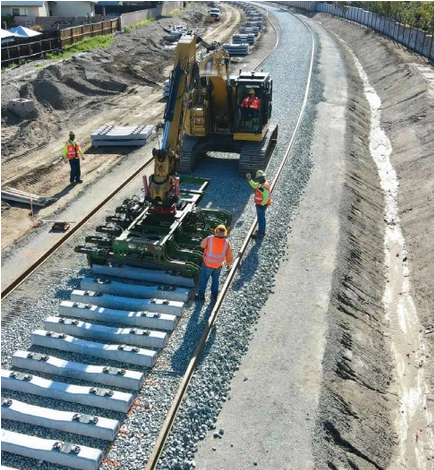Today marks the start of a new legislative session, and between redistricting, resignations, and other personnel changes, the California legislature is in an extended state of transition.
One thing that is generally agreed on already, however, is that 2022 will see another substantial budget surplus. How that is spent, or saved, will be decided over the coming months, with the first move coming from Governor Newsom when he submits his proposed budget on January 10.
LA Metro Board of Directors isn't waiting passively to see what happens. The board wrote a letter requesting area representatives in the legislature to support investing $16.5 billion from the state surplus into transportation infrastructure. Their letter, which is on the agenda for the board's January 5 meeting [PDF], includes a specific list of suggested investments in transit, active transportation, high-speed rail, and other infrastructure.
The budget surplus is a "golden opportunity" to improve these important projects in the region's Long Range Transportation Plan, says the letter, and a chance to create a connected regional network of clean, sustainable travel options.
The letter requests:
- $10 billion for Public Transit capital projects, which could be used for Bus Rapid Transit/Bus-Only Lanes countywide, Metro extensions, transit corridors in the East San Fernando Valley, through the Sepulveda Pass, and in Inglewood, and for needed maintenance of the existing transit network.
- $2.5 billion for "projects that support the 2028 Summer Olympic and Paralympic Games." Southern California's goal is "to enable all ticketed spectators to access competition venues by public transit, walking, or cycling."
- Increased allocation of up to $500 million for the Active Transportation Program. There is a backlog of projects that have scored well but not been funded under the ATP - but $500 million is not very much. The CTC itself has requested a $2 billion increase in the program, and given the current push to provide safety for people on transit, on foot, and on bike at the state level, even that amount may be nowhere near enough.
The letter doesn't say as much, but there could have already been a $500 million allocation in 2021. Instead, that potential funding was blocked when Assembly Speaker Anthony Rendon and Assembly Transportation Chair Laura Friedman ended negotiations over high-speed rail funding (see here and here for more details).
- $1 billion for a new California Next Generation High Speed Rail Program. This is specifically a request for projects to help Metrolink prepare for future high speed rail connections.
- $1 billion for Transit Customer Service, Resiliency and Fare Reduction programs on rail and municipal bus systems, including things like bus stop lighting and shade and reduced and free-fare programs.
- $1 billion for the deployment of zero emission buses.
- $500 million for the Trade Corridors Enhancement Program, which could be used to address grade separation projects to speed freight rail in Southern California.
The letter makes no mention of highway improvements, although much of Metro's highway money comes through already approved state and federal funding programs. That is, it doesn't have to be begged for like transit funding does.






